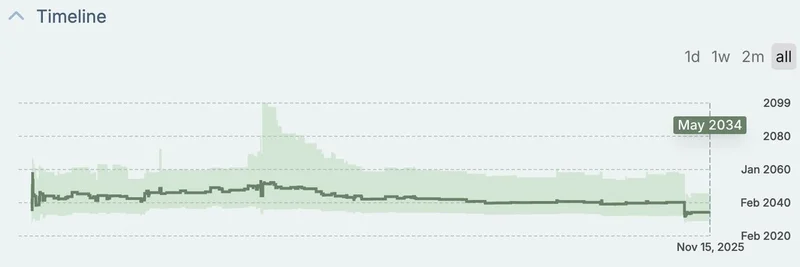Haseeb Qureshi, managing partner at Dragonfly Capital, recently shared some level-headed thoughts on the evolving threat of quantum computing to cryptography in a thread on X. Quoting Nic Carter's take on Scott Aaronson's prediction that a fault-tolerant quantum computer could run Shor's algorithm before the next U.S. presidential election, Haseeb emphasizes the need to take this seriously without panicking. For those new to the term, Shor's algorithm is a quantum computing method that could efficiently factor large numbers and break certain types of encryption, like the ones securing many blockchains today.
The thread highlights a key distinction: while running Shor's algorithm to factor a small number might happen soon, scaling it to crack real-world 256-bit elliptic curve cryptography (ECC) keys— the kind used in Bitcoin and Ethereum—requires massive engineering leaps. Haseeb points to Metaculus, a prediction platform, which now estimates the first RSA number factoring via Shor's around 2034. That's a median guess, meaning it could come earlier or later, but notably, this forecast has dropped dramatically from 2052 just three years ago. Progress in quantum tech is accelerating faster than expected.
Why This Matters for Blockchains and Meme Tokens
Blockchains rely on public-key cryptography to secure transactions and wallets. If quantum computers break these systems, it could expose funds to theft, especially dormant addresses with exposed public keys. Meme tokens, often built on platforms like Solana or Ethereum, aren't immune—think of the chaos if a quantum breakthrough hits before networks upgrade.
Haseeb notes we have time for an orderly transition to post-quantum cryptography, which involves algorithms resistant to quantum attacks. He suggests blockchains need at least four years to adapt, giving us a window over the next few years to plan upgrades. This isn't just theoretical; it's a call to action for developers and communities in the crypto space.
Responses and Broader Context
The thread sparked replies from experts like Alex Pruden, CEO of Project 11, who urges getting serious without relying solely on Metaculus polls, which can be swayed by a few votes. He cites facts: quantum scale will shatter crypto fundamentals, expert tones are shifting, and resource needs for Shor's have plummeted 20x this year alone, thanks to breakthroughs like Google's Willow Chip.
Nic Carter chimes in, projecting "Q-day"—when quantum breaks ECC—between 2028 and 2033, based on falling estimates. Others, like Pierre-Luc from Pauli Group, predict timelines compressing further due to AI aiding quantum builds.
There's optimism too. One reply highlights how innovative tech progress is often overestimated short-term but underestimated long-term, and smart teams solve problems faster than they arise. Even so, projects like Cellframe are positioning themselves as quantum-resistant, ready to "Noah's Ark" the crypto world.
For meme token enthusiasts, this underscores the importance of staying informed. While pumps and dumps grab headlines, underlying tech shifts like quantum resistance could determine which chains—and tokens—thrive long-term. If you're holding or trading memes, keep an eye on how base layers like Ethereum plan their post-quantum forks.
Check out the full thread here for more details and join the conversation. As quantum tech evolves, so must our strategies in the blockchain world.


